Himart - Deokgye Branch [Tax Refund Shop] (하이마트 덕계점)
19.0Km 2024-04-18
831, Ungsang-daero, Yangsan-si, Gyeongsangnam-do
-
Jangcheokgyegok Valley (장척계곡)
19.0Km 2021-08-02
544, Jangcheok-ro, Gimhae-si, Gyeongsangnam-do
+82-55-330-8741
Located at the foot of Sineosan Mountain in Gimhae, Gyeongsangnam-do, Jangcheokgyegok Valley is a natural recreation area that is surrounded by nature's beauty. The sound of running water coming from Dongbonggyegok Valley, the dense forest, and the huge rocks make this place a soothing place to relax. Located close to the valley are Jangcheok Village, Jangcheok Reservoir, and a site that's shaped like a wild boar descending from the mountain.
Mubongsa Temple (무봉사)
19.0Km 2021-06-15
16-11, Yeongnamnu 1-gil, Miryang-si, Gyeongsangnam-do
+82-55-354-3296
Mubongsa, meaning “a sacred place where phoenix used to dance,” is a small Buddhist temple. It is conveniently located near one of the Miryang’s top attractions, Yeongnamnu Pavilion. Perched high on the cliffs above the upper reaches of the river is Aranggak Pavilion. A flight of stairs from this pavilion lead to the famous Yeongnamnu Pavilion and Mubongsa Temple. Enshrining a stone seated Buddha statue designated as Treasure No. 493, the temple has long been a popular site among poets and painters for its picturesque landscape.
Miryang Arirang Festival (밀양 아리랑대축제)
19.1Km 2025-07-11
Sammun-dong, Miryang-si, Gyeongsangnam-do
+82-55-359-4500
Listed as a UNESCO Intangible Cultural Heritage of Humanity, “Miryang Arirang” is famous for its repetitive lyrical phrase “Look at me.” The Miryang Arirang Festival is held to remember and develop this traditional piece of music. This historic event began as the Miryang Cultural Festival in 1957. The highlight of the festival is the musical Miryanggang Odyssey, where a magnificent fantasy world of light unfolds against the backdrop of Yeongnamnu Pavilion and the Miryanggang River. Visitors can also check out the historical exhibits of “Miryang Arirang” at the Arirang Exhibition, and enjoy other exhibits, activities, and performances like the Miryang Arirang Song Contest and Arirang Experience.
◎ Miryang Arirang
One of Korea’s three major “Arirang,” “Miryang Arirang,” is played to cheerful and upbeat music, but the lyrics contain the tragic story of Arang, the daughter of the Miryang governor.
Aranggak Pavilion (아랑각)
19.1Km 2025-01-07
324, Jungang-ro, Miryang-si, Gyeongsangnam-do
+82-55-359-5788
Located in Naeil-dong in Miryang, Gyeongsangnam-do Province, Aranggak Pavilion sits in a bamboo forest. It is said to have been built to appease the spirit of a young woman named Arang, who met an unfortunate death.
According to the legend, Arang was mistakenly killed by a low-ranking officer who had loved her and tried to hug her. After her death, she becomes a ghost and appears to every district magistrate (highest-ranking officer in a region) to appeal for the investigation of her unfair death, but each district magistrate dies of a heart attack.
Then, a new district magistrate by the name Lee is dispatched to the area. Unlike his predecessors, Lee listens to the story of the ghost and finds the low-ranked officer who had killed her and punishes him. He found Arang’s body and holded a religious ceremony on her behalf. Aranggak was also built in her memory.
Every year, an event called Arangje is held on April 16 by the lunar calendar in Aranggak Pavilion. Young maidens dressed in white hanbok perform a religious ceremony to soothe the sorrow of Arang. There is also a saying that the spirit of Arang will preserve the love of those couples who visit the pavilion together.
Miryang Museum (밀양시립박물관)
19.1Km 2021-07-20
100, Miryangdaegongwon-ro, Miryang-si, Gyeongsangnam-do
+82-55-359-5589
Miryang Museum features cultural items and materials of the Nakdonggang River area. The purpose of the museum is to effectively preserve, exhibit, and acknowledge the history and culture of the area
through collecting, researching, investigating and organizing the items on display. In addition, the museum was established to enhance cultural nostalgia and contribute to public education.
The museum is comprised of several halls, including a permanent exhibition hall and a temporary exhibition hall, showing the history of
Miryang during the Samhan era and the Joseon dynasty. Collections include various cultural assets designated by Gyeongsangnam-do, as well as an exhibit-style storage of literary works, and folk and daily relics.
Miryang Yeongnamnu Pavilion (밀양 영남루)
19.1Km 2021-06-21
324, Jungang-ro, Miryang-si, Gyeongsangnam-do
+82-55-356-1355
Located within Adongsan Mountain next to the Namcheongang River in Miryang, Yeongnamnu Pavilion (National Treasure No. 147) is one of three great pavilions of Korea together with Choseongnu Pavilion of Jinju and Bubyeongnu Pavilion of Pyeongyang.
A two-story-pavilion with a hip-and-gable roof was constructed at the same site during the Silla period, as part of Yeongnamsa Temple, which was one of the five great temples at the time. The pavilion was torn down and re-constructed during the ruling of King Gongmin in Goryeo dynasty. The current structure was built in 1884 and designed by then-magistrate Yi In-jae.
The pavilion area consists of Neungpagak, Chimnyugak, Sajumum Gate, Iljumun Gate and Cheonjingung. Stone-carved calligraphy from the Joseon period abounds in the pavilion complex, drawing many visitors.
Miryang Cultural Heritage Night Tour (밀양문화유산야행 )
19.2Km 2024-03-20
324 Jungang-ro, Miryang-si, Gyeongsangnam-do
+82-55-355-0306
Miryang Cultural Heritage Night Tour is a special evening event to showcase the history and cultural relics of Miryang through storytelling.
Seongnamsa Temple (석남사 울산)
19.2Km 2020-03-17
557, Seongnam-ro, Ulju-gun, Ulsan
+82-52-264-8900
The name of the temple is believed to have originated from the fact that it is located south of Gajisan Mountain or Seokansan Mountain. Built in 824 A.D. (during the 16th year of King Heondeok’s reign), the temple was destroyed during the Japanese Invasions of Korea (1592-1598) and rebuilt in 1674 (during the 15th year of King Hyeongjong’s reign). Since then, it has gone through rebuilding several times. Consisting of 30 buildings, the temple is home to many Buddhist nuns.
Seongnamsa Three Story Pagoda (Local Tangible Cultural Property No. 5) was built in 824 A.D. by Monk Doui, reflecting his wish of protecting the country from foreign invasions. The pagoda was initially placed in front of Daeungjeon, but moved to the current location in 1973. Other notable relics in the temple include the Statue of Monk Doui (National Treasure No. 369), Three Story Sarira Pagoda, and Stone Water Tank (Cultural Property Material No. 4).
![Himart - Deokgye Branch [Tax Refund Shop] (하이마트 덕계점)](http://tong.visitkorea.or.kr/cms/resource/24/2890024_image2_1.jpg)

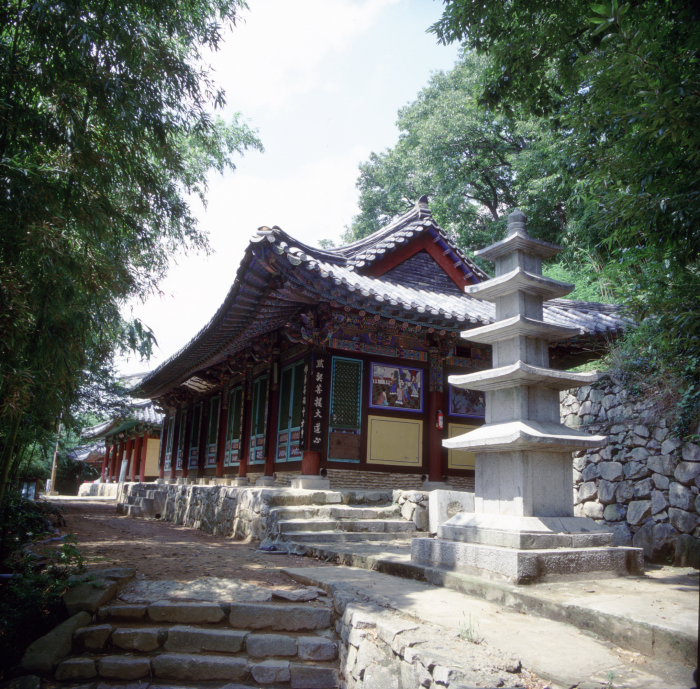
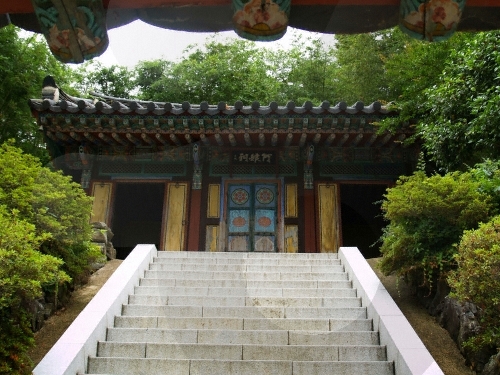
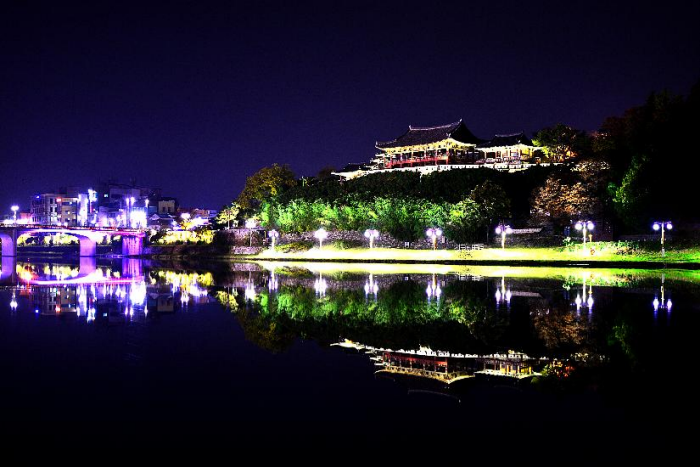
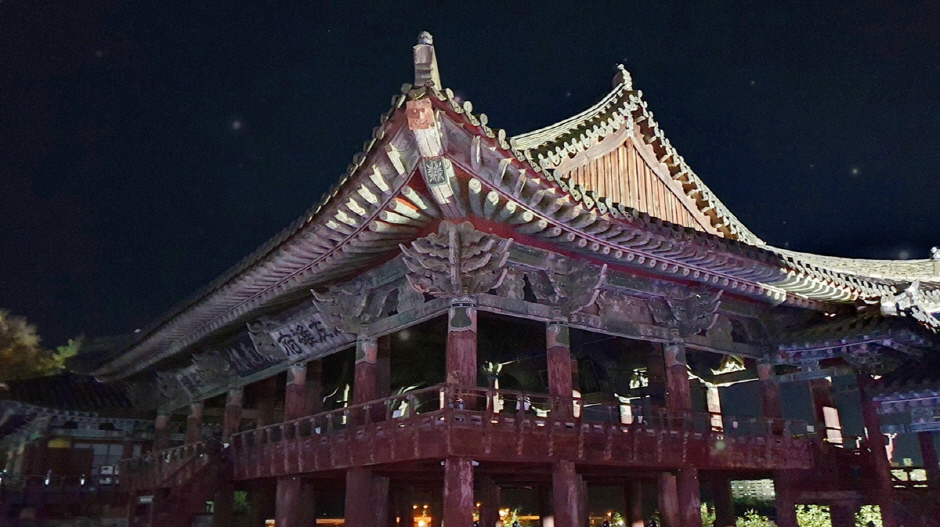
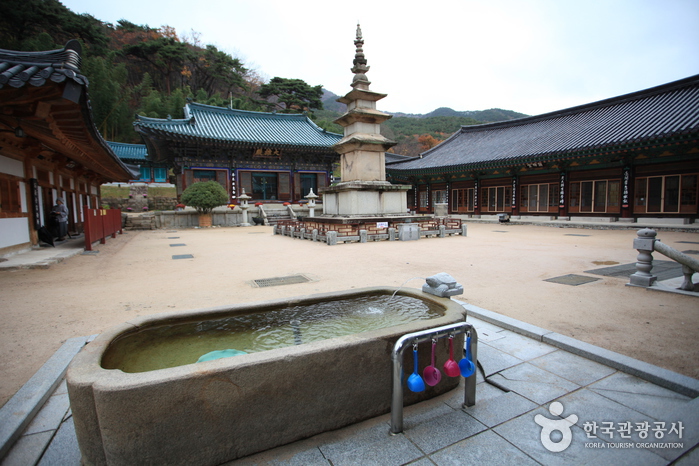
 English
English
 한국어
한국어 日本語
日本語 中文(简体)
中文(简体) Deutsch
Deutsch Français
Français Español
Español Русский
Русский